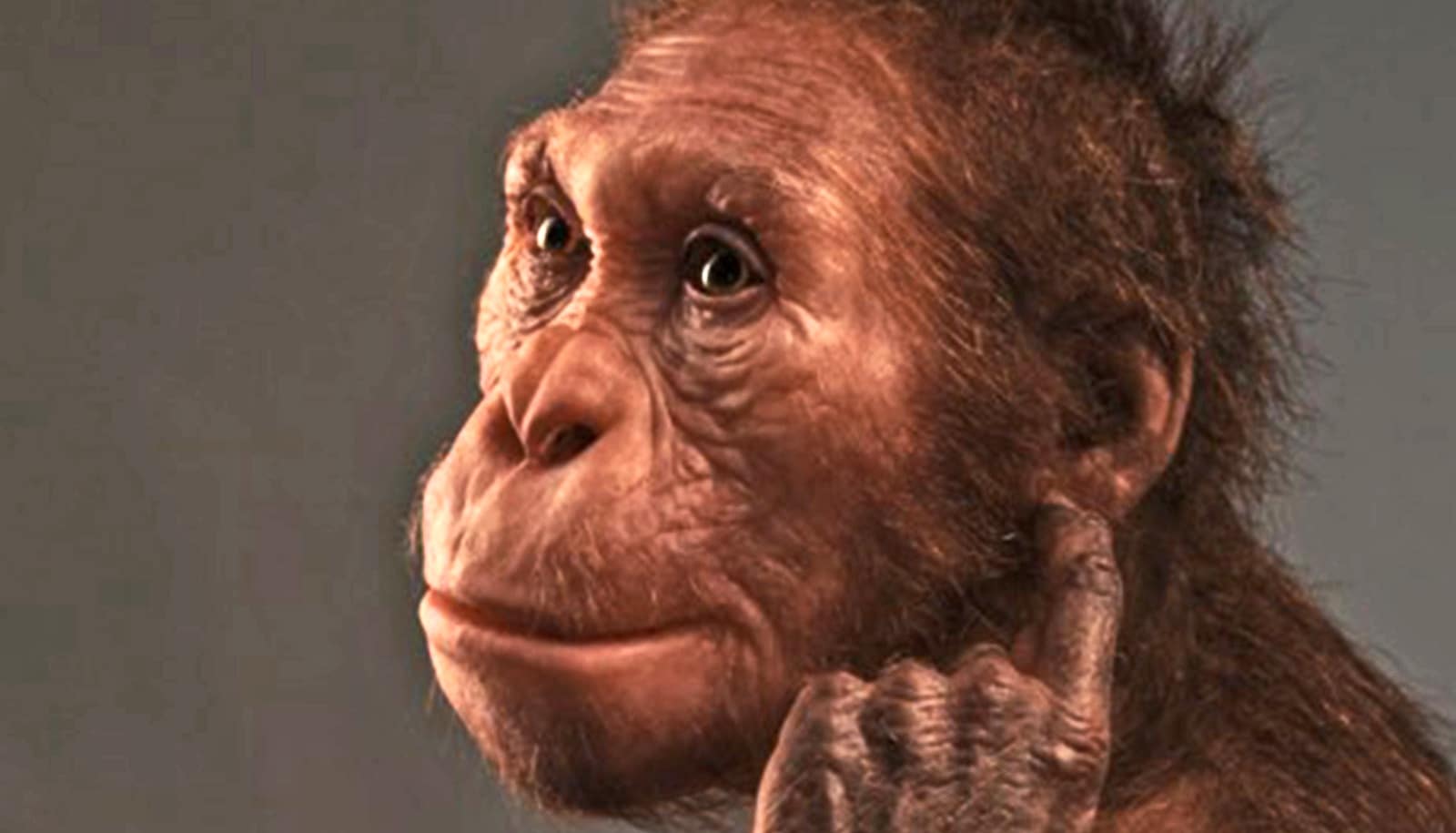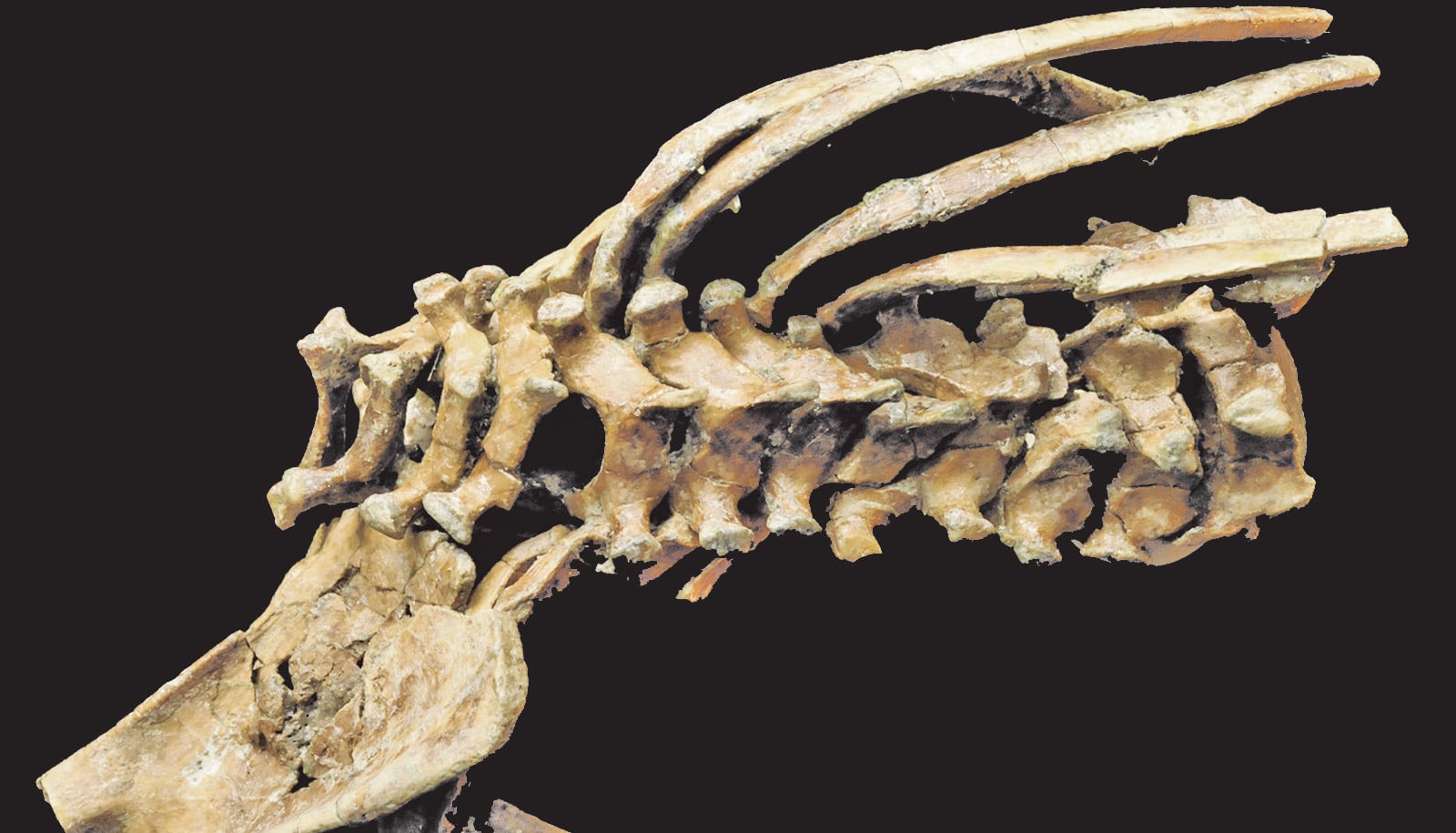New lower back fossils are the “missing link” that settles a decades old debate proving early hominins used their upper limbs to climb like apes and their lower limbs to walk like humans.
The recovery of new lumbar vertebrae from the lower back of a single individual of the human relative, Australopithecus sediba, and portions of other vertebrae of the same female from Malapa, South Africa, together with previously discovered vertebrae, form one of the most complete lower backs ever discovered in the early hominid record.
“Issa walked somewhat like a human, but could climb like an ape.”
Researchers discovered the fossils in 2015 during excavations of a mining trackway running next to the site of Malapa in the Cradle of Humankind World Heritage Site, just northwest of Johannesburg, South Africa.
Malapa is the site where, in 2008, Lee Berger from the University of the Witwatersrand and his then nine-year old son, Matthew, discovered the first remains of what would be a new species of ancient human relative named Australopithecus sediba.
Fossils from the site have been dated to approximately two million years before present. The vertebrae described in the present study were recovered in a consolidated cement-like rock, known as breccia, in near articulation.
Rather than risking damaging the fossils, researchers prepared them virtually after scanning with a micro-CT scanner at the University of the Witwatersrand, thus removing the risk of damaging the closely positioned, delicate bones during manual preparation.
Once virtually prepared, the vertebrae were reunited with fossils recovered during earlier work at the site and found to articulate perfectly with the spine of the fossil skeleton, part of the original Type specimens of Australopithecus sediba first described in 2010. The skeleton’s catalogue number is MH 2, but the researchers have nicknamed the female skeleton “Issa,” meaning protector in Swahili. The discovery also established that like humans, sediba had only five lumbar vertebrae.
“The lumbar region is critical to understanding the nature of bipedalism in our earliest ancestors and to understanding how well adapted they were to walking on two legs,” says Scott Williams, professor at New York University and Wits University and lead author of the paper in eLife.
“Associated series of lumbar vertebrae are extraordinarily rare in the hominin fossil record, with really only three comparable lower spines being known from the whole of the early African record.”
The discovery of the new specimens means that Issa now becomes one of only two early hominin skeletons to preserve both a relatively complete lower spine and dentition from the same individual, allowing certainty as to what species the spine belongs to.
“While Issa was already one of the most complete skeletons of an ancient hominin ever discovered, these vertebrae practically complete the lower back and make Issa’s lumbar region a contender for not only the best-preserved hominin lower back ever discovered, but also probably the best preserved,” says Berger, who is an author of the study and leader of the Malapa project.
He adds that this combination of completeness and preservation gave the team an unprecedented look at the anatomy of the lower back of the species.
Previous studies of the incomplete lower spine by authors not involved in the present study hypothesized that sediba would have had a relatively straight spine, without the curvature, or lordosis, typically seen in modern humans.
They further hypothesized Issa’s spine was more like that of the extinct species Neanderthals and other more primitive species of ancient hominins older than two million years. Lordosis is the inward curve of the lumbar spine and is typically used to demonstrate strong adaptations to bipedalism.
However, with the more complete spine, and excellent preservation of the fossils, the present study found the lordosis of sediba was in fact more extreme than any other australopithecines yet discovered, and the amount of curvature of the spine observed was only exceeded by that seen in the spine of the 1.6-million-year-old Turkana boy (Homo erectus) from Kenya and some modern humans.
“While the presence of lordosis and other features of the spine represent clear adaptations to walking on two legs, there are other features, such as the large and upward oriented transverse processes, that suggest powerful trunk musculature, perhaps for arboreal behaviors,” says coauthor Gabrielle Russo, professor at Stony Brook University.
Strong upward oriented transverse spines are typically indicative of powerful trunk muscles, as observed in apes. Shahed Nalla, a professor at the University of Johannesburg and Wits, who is an expert on ribs and a researcher with the present study, says: “When combined with other parts of torso anatomy, this indicates that sediba retained clear adaptations to climbing.”
Previous studies of this ancient species have highlighted the mixed adaptations across the skeleton in sediba that have indicated its transitional nature between walking like a human and climbing adaptations. These include features studied in the upper limbs, pelvis, and lower limbs.
“The spine ties this all together,” says Cody Prang, professor at Texas A&M University, who studies how ancient hominins walked and climbed. “In what manner these combinations of traits persisted in our ancient ancestors, including potential adaptations to both walking on the ground on two legs and climbing trees effectively, is perhaps one of the major outstanding questions in human origins.”
The study concludes that sediba is a transitional form of ancient human relative and its spine is clearly intermediate in shape between those of modern humans (and Neanderthals) and great apes.
“Issa walked somewhat like a human, but could climb like an ape,” says Berger.
Source: NYU



